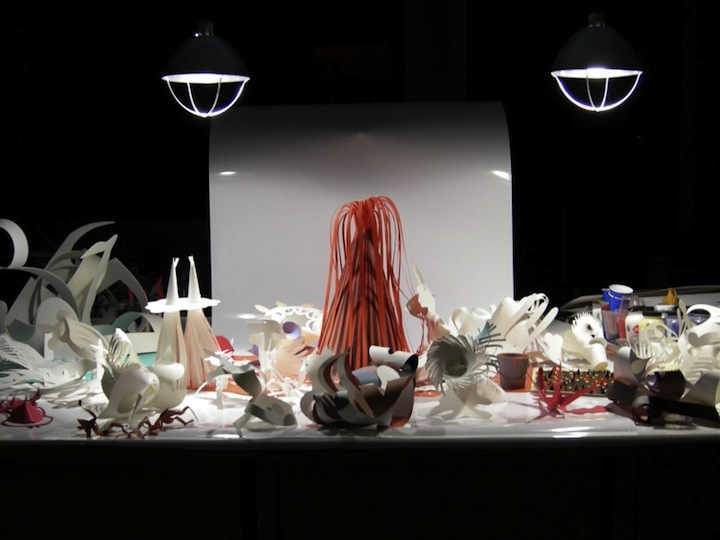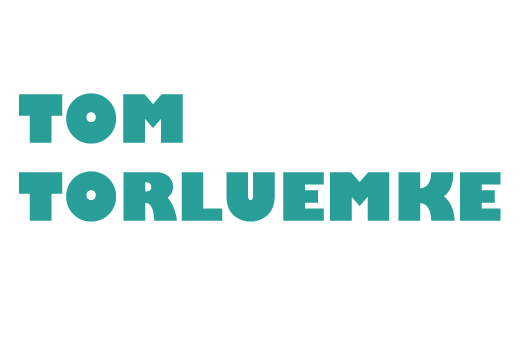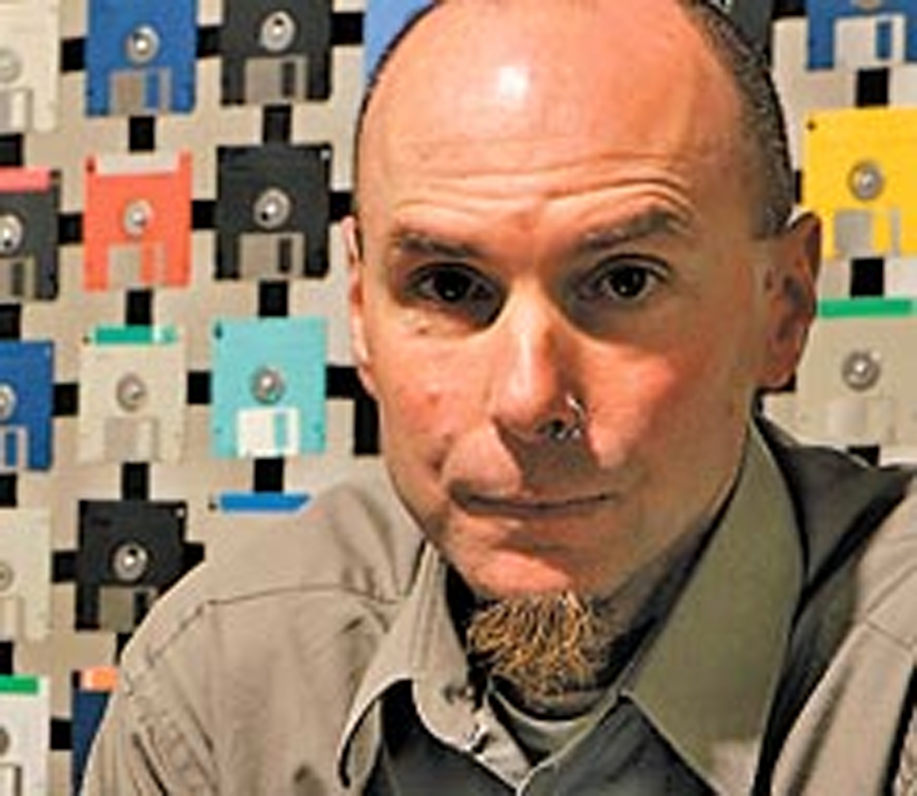
Exposé – Tom Torluemke: by Kevin Freitas
In AD 105, a Chinese official by the name of Ts’ai Lun, invented papermaking using textile waste and is considered to be the birth of paper as we know it today. Since then, paper has been used by artists, society, and the government as a very vital and necessary documentary tool that links us to a rich past and increasingly perilous future.
And herein lies the rub. A classic example and struggle between the old and the new, an industrial age versus a technological newer one, craftsmanship versus commercially produced, made in America versus made in China, Taiwan, India, Mexico ad naseum, outsourced jobs that lead to outsourced unemployment in foreign countries outsourcing further still to more cost effective foreign competitors with not surprisingly, lower labour costs. The list is long, yet we still all have a dream no? Is it uniquely an American dream?
Most artists have a dream, Martin Luther King – though not an artist, had one. I bet even Rodney King had one. Henri Matisse had one – though much simpler and more formal and I know Tom Torluemke has one. Dreams come in many shapes and sizes, at different costs as well, for Torluemke though, his come in the form of paper.
It’s difficult not to make comparisons to Matisse’s “Découpages” when looking at Torluemke’s paper sculptures, though the similarities quickly dissolve when Torluemke’s works “pop-up” from the flatness of Matisse’s heritage. “Cutting into color” Matisse was often quoted as saying of his brightly hued gouache cutouts, “reminds me of the direct carving of the sculptor.” Torluemke has learned this lesson well and has employed it throughout his long and satisfying artistic career. Torluemke “cuts” or carves into the picture plane with such deftness and clarity that it makes any seasoned draftsman look amateurish. Torluemke’s ability to crossover from watercolour (on par with any work done by Francesco Clemente) to his vinyl collage work with shelving paper to masterful line work in any of his drawings to his intricate and highly symbolic paintings to large scale mural work and then onto his delicate, lacy, sexy, aggressive hybrid paper sculptures, and to do it with such ease by capitalizing on and using the strengths of each moves his work, as Robert Hughes refers to, “toward a natural decorative formality.” A decorative formality with a political wallop. A decorative formality that has become a means to an end, the icing on the cake, the bow on the box, the key to Pandora’s box – or to paradise.
Matisse said his goal was to establish “a sort of hierarchy of all my sensations.” Torluemke too has established his hierarchy of sensations, the only difficulty he has is choosing the medium in order to, as Hughes states again, “possess and minutely articulate the nuances of feeling.” The works in paper by Torluemke are but one nuance of existence. Hughes continues, “there was nothing more decisive than the actual process of cutting, the shears slicing through the painted paper, dividing the final form from its surplus without ambiguity.” Torluemke uses the lessons from the past merges them seamlessly into the experiences of the present with the perspicacity of the future.
There are many foreign and dangerous elements in “Flesh and Blood,” many very unassuming, many decorative and “pretty,” tantalizing to the touch, harmless maybe but somehow unnerving in their peacefulness, sprung like traps, hidden like I.E.D.’s. Some are simply bizarre, comical, like one that appears to resemble a Flinston-esque club, paper spikes and all with a frilly tassel for a handle. And then there’s “Flying Holster,” what other symbol epitomizes perfectly the passive/aggressive shoot ‘em up cowboy mentality of the American west. However, this holster has perhaps been transformed into a symbol of Peace, like some reformed dove, flying away, the arm of destruction absent. “The American Eye Pull-up Bar” is perhaps the most frightening work. A pull-up bar is wedged in between two painted wide open unblinking eyes, the bar penetrates both pupils, blood streams down the face and lies in pools on the floor below. There is a small wooden step stool that allows the viewer access to the bar, several have passed before us as the blood spattered steps and bloody footprints bear witness. Go ahead grab the bar, two red markers indicate where you should place your hands, hold on now and release yourself from the stool. Congratulations, you now have become executioner as well as the executed, the judge and the jury, the murderer and victim of the American dream. You have been blinded by the weight of your ignorance, weakened by your hypocritical beliefs, bloodied by your senseless aggression. Welcome to America.
However, the cliché says that every cloud has a silver lining and that can be found in other beautiful and exquisite works by Torluemke, it’s just that you can’t shake that feeling that there is something horribly awry in Candyland. Even a piece as simple and elegant as a white cone immersed in a twirling downward spiral of chocolate ecstasy, oozing outward at its base, is nothing more than a metaphor for the shit that always runs downhill. The range of Torluemke’s paper sculptures run the gamut from the most simple and ecstatic forms to the more complex and intricate – what I like to call, exploding Piñatas. Torluemke is a master découpeur. This is not some poor man’s origami!
Robert Hughes in his review of Matisse’s cutouts, referred to him as the Sultan of the Mediterranean, emphasizing the greatness and purity in the old man’s (my words) art works citing others as examples such as Rembrandt, Titian or Bernini for their greatness and achievements in their Golden years. “Young prodigies in art are as common as seagulls; the rarities are old,” says Hughes. Not true I say, there are a few exceptions to every rule, Torluemke being an excellent case. A young man of 47 with a breadth of experience and art making to rival any artist twice that age, that shows no sign of slowing down, nor desire to, that pursues a unique and solitary vision, ingesting and transforming anyone or anything in his path, mastering his domain with authority and decisiveness, ingenuity, goodwill, honesty, humor and a healthy dose of humbleness. No, I say Tom Torluemke is the Sultan of the Midwest.
Kevin Freitas, 12/2006
 tomtorluemke.com
tomtorluemke.com
